Exploring Widgets on iPhone: Evolution and Impact
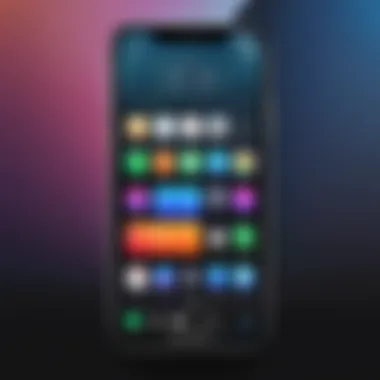
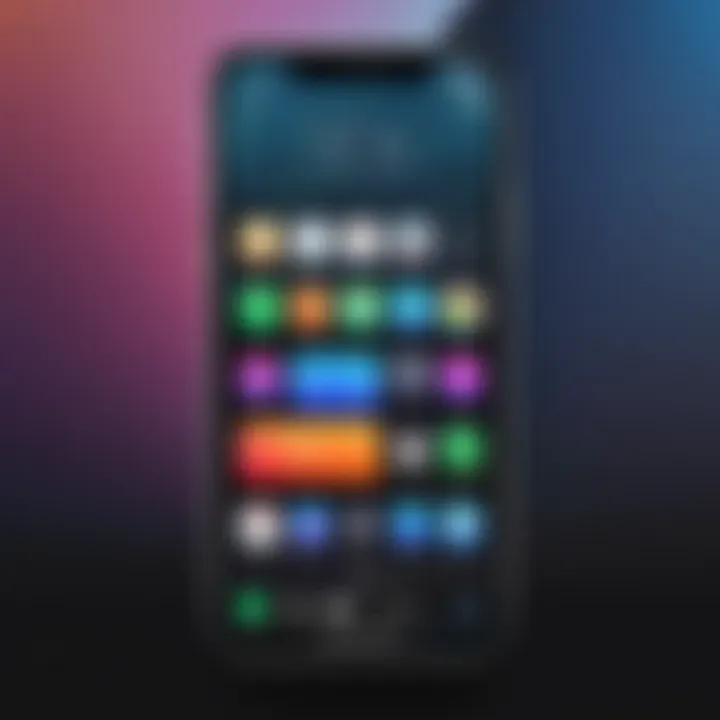
Intro
The integration of widgets on the iPhone represents a significant development in the iOS experience, reshaping how users interact with their devices. As users seek more personalized and efficient digital environments, widgets offer a pathway to enhance accessibility, functionality, and aesthetics on the home screen. This article will explore the evolution of widgets on the iPhone, examining their practical use cases, customization options, and the overall impact on user experience.
Understanding widgets goes beyond mere functionality; it encompasses the broader context of how technology adapts to meet human needs. This exploration is not just for tech enthusiasts but for everyday users who are looking to maximize the utility of their iPhones.
Overview of the Technology
Widgets on the iPhone are interactive components that provide users with quick access to information and app functions directly from the home screen. Since their introduction, they have undergone a marked transformation, enhancing the user interface in meaningful ways.
Key specifications
Modern iOS widgets are designed to accommodate various functionalities:
- Interactive Elements: Users can engage with widgets, which allows for quicker actions without opening the app fully.
- Smart Stacking: This feature automatically shows the most relevant widget at any given time based on context and usage patterns.
- Various Sizes: Widgets are available in multiple sizes, providing flexibility in how much information can be displayed.
These specifications highlight how widgets contribute to a seamless user experience, allowing for a more customizable and efficient way to interact with content.
Unique selling points
Widgets stand out in the Apple ecosystem due to their unique advantages:
- Personalization: Users can choose what is displayed and how it appears on their home screens.
- Efficient Information Display: They deliver relevant information at a glance, reducing the need for users to keep opening apps.
- Integration with Apps: Widgets are often tightly tied to specific app functions, enhancing overall app usability.
"Widgets enable users to tailor their iPhone experience to suit their personal preferences and enhance productivity directly from their home screens."
The combination of these features signifies how widgets are not just a trend, but a fundamental aspect of the iPhone interface that aids in boosting user productivity and engagement.
Design and Build Quality
The design and build quality of iPhone widgets contribute significantly to their functionality and appeal.
Material used
Widgets are implemented digitally; however, their design follows Apple's stringent aesthetic guidelines. The user interface is clean, cohesive, and infused with familiar elements from the overall iOS architecture. This level of design consistency instills confidence in the product and encourages user interaction.
Ergonomics and usability
From a usability perspective, widgets are engineered with user interaction in mind. The layout is intuitive, which allows users to engage with the widget effortlessly. The varying sizes and smart stacking feature are additional aspects that enhance the ergonomic experience, allowing users to tailor widget placement based on their usage patterns.
This exploration has outlined how the integration of widgets on iPhones is more than a mere enhancement. It reflects a shift towards a more dynamic, user-centered approach in the design of mobile technologies. By considering these factors, both tech-savvy individuals and everyday users can better understand the potential of widgets within the iOS ecosystem.
Prolusion to Widgets on iPhone
The integration of widgets on iPhone represents a significant evolution in how users interact with their devices. Widgets serve as a bridge between applications and the home screen, offering vital information at a glance. They empower users to access important functions without navigating through multiple apps. This enhancement not only boosts efficiency but also enriches the overall user experience.
In this section, we will explore two core aspects: the concept of widgets and an overview of iOS development. Understanding the fundamental principles behind widgets lays the groundwork for appreciating their role in iPhone's interface. Furthermore, an overview of iOS development will help contextualize how widgets are designed and integrated into this ecosystem.
The Concept of Widgets
Widgets are interactive elements that present information and functionality from applications directly on the home screen. They provide users with relevant updates, shortcuts, and interactive components that foster quick access to frequently used features. The main appeal of widgets lies in their ability to display content dynamically, such as real-time weather updates, calendar events, or news headlines.
Their utility extends beyond mere convenience. For instance, a weather widget not only shows the current temperature but may also display forecasts, allowing users to make informed decisions at a glance. Widgets can be customized, and their sizes can change to accommodate various layouts, making personalization a key feature.
Overview of iOS Development
Understanding the iOS development landscape sheds light on how widgets function within the operating system. Developed by Apple, iOS follows a well-structured framework designed to offer developers robust tools for creating applications. Each version of iOS introduces enhancements that often include improvements to widget functionality.
iOS development utilizes Swift and Objective-C, languages recognized for their efficiency and performance. Moreover, with the introduction of SwiftUI, creating widgets became more accessible. SwiftUI offers a declarative syntax that allows developers to craft interfaces with minimal code. This approach not only streamlines development but also enhances overall user interface consistency across iOS applications.
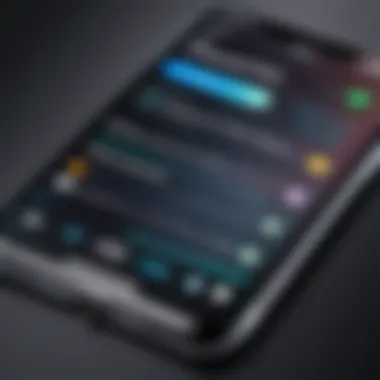

Widgets serve as important companions to mobile applications. They enhance functionality, streamline tasks, and ultimately contribute to a more satisfying user experience.
In summary, widgets on iPhone mark a pivotal shift in user interaction, fostering efficiency and personalization. Understanding the concept of widgets and their roots in iOS development is crucial for grasping their significance in today's tech landscape.
Historical Context of Widgets
Understanding the historical context of widgets is essential for recognizing their current significance in the iPhone ecosystem. Widgets have transformed from being mere peripheral elements to central interfaces that enhance the functionality of mobile devices. This evolution reflects larger trends in technology, user interaction, and the continual push for increased personalization in digital experiences. As mobile technology advanced, so did the need for more intuitive, engaging, and useful interfaces that facilitated access to information while maintaining aesthetic appeal.
The Evolution of Widgets in Mobile Technology
Widgets first emerged as interface components that provided quick access to applications or information. Initially, their implementation was rudimentary, often limited to static representations of application data. However, the rapid advancement in mobile technology led to a shift towards more dynamic and responsive widgets. The emergence of touchscreens significantly impacted user interaction, allowing for gestures and various forms of input.
As developers recognized the demand for a richer user experience, widgets evolved in both functionality and design. No longer restricted to basic updates, they began to support real-time information, personalized content, and various interactive capabilities. This evolution has been marked by several key aspects:
- Interactivity: Users began expecting widgets that do more than display information. Interactive features such as touch responses, app linking, and real-time updates became standard.
- Customization: As personalization became more important, the ability for users to customize widgets to suit their preferences emerged as a crucial element.
- Integration with Applications: Widgets now operate not in isolation but as integrated elements of applications, enabling seamless transitions between tasks and enhancing overall productivity.
Prologue of Widgets in iOS
The introduction of widgets into iOS marked a significant moment in Apple's design philosophy. Widgets were first introduced to the iPhone user interface with the advent of iOS 14, which allowed users to place widgets on their home screens. This feature gave users increased control over their device layout. Applying concepts from previous iterations became evident.
With the new approach, Apple encouraged developers to create more versatile widgets that could cater to various user needs. Each widget could showcase personalized information, supporting functionalities that users found most relevant.
The adoption of widgets in iOS not only improved user experience but also created opportunities for developers to innovate rapidly. It has also proven to be a critical element in user engagement, making the mobile device feel more connected to the user’s daily life.
"Widgets serve as a bridge between applications and user interface, transforming interaction models fundamentally."
Types of Widgets Available on iPhone
Widgets on the iPhone significantly enhance the user experience by providing quick access to information and functionalities directly from the home screen. This section will explore the different types of widgets available, focusing on their specific attributes, benefits, and considerations. Understanding these options allows users to leverage the full potential of their devices, personalizing their interactions based on individual needs and preferences.
Smart Stack Widgets
Smart Stack Widgets are a unique feature on the iPhone that automatically displays the most relevant widget at any given time. This dynamic functionality is particularly useful for users who have multiple widgets. By intelligently rotating through widgets based on user context and activity, Smart Stack minimizes clutter while maximizing utility. For instance, your calendar widget may appear in the morning when planning your day, but as evening approaches, a news widget may be prioritized.
Users can customize what widgets are included in the Smart Stack, enhancing personalization. Additionally, the ability to swipe through the stack ensures that all relevant information is readily accessible without overwhelming the home screen. This type of widget exemplifies how iPhone widgets adapt to user behavior and preferences for an efficient experience.
Standalone Widgets
Standalone Widgets serve a different purpose; they display specific information or functionalities without relying on other widgets. These widgets are often larger and can take up significant real estate on the home screen, yet they provide direct access to key information at a glance. For example, the Weather widget offers current conditions and forecasts in a compact yet informative manner.
The attractiveness of standalone widgets lies in their ability to provide detailed insights into particular apps, such as the Music widget showing currently playing songs or the Fitness widget tracking health goals. Users can select from small, medium, and large sizes to fit their layout preferences. Careful consideration of which standalone widgets to include can elevate efficiency, as users quickly scan the information they need without navigating through apps.
Third-Party Widgets
The world of third-party widgets expands the iPhone's capabilities even further. Many app developers have embraced widget creation to enhance user engagement and provide more context-rich experiences. Popular apps, such as Todoist or Spotify, offer their widgets, integrating seamlessly with the iPhone's home screen.
These widgets can vary widely in function and design. Third-party widgets enable users to personalize their home screens with unique aesthetics and specific functionalities not included by default on iOS. For example, a third-party weather application might provide a different visual representation than the built-in widget, catering to diverse user preferences.
However, it's crucial to consider performance implications. Not every third-party widget is fully optimized, which may affect device resources. Users should choose wisely, ensuring that the benefits of additional functionality outweigh possible performance drawbacks.
"Exploration of widget types allows users to mold their iPhone experience, tailoring it to fit their personal and functional needs."
In summary, the types of widgets available on iPhone—Smart Stack, Standalone, and Third-Party—each offer distinct functionalities. They cater to various user preferences and needs, enabling personalized and efficient interaction with the device. The selection process should involve understanding the unique benefits each widget type brings and how they may fit into an individual's digital lifestyle.
Customization and User Preferences
Customization of widgets on the iPhone reflects the growing emphasis on personalization in technology. This section explores the importance of user preferences in enhancing usability and overall satisfaction with digital products. With widgets, users can not only access information quickly but also tailor their experience based on their needs. Such customization promotes a sense of ownership and control, allowing users to create a more engaging and relevant visual space on their devices.
How to Customize Widgets
Customizing widgets involves several straightforward steps. First, users can enter the Home Screen editing mode by long-pressing an empty space on their screen. This mode allows them to add, remove, or rearrange widgets. The widget gallery displays various available widgets that can be dragged onto the home screen. By selecting a widget, a dialog box typically appears, offering options for widget type and size.

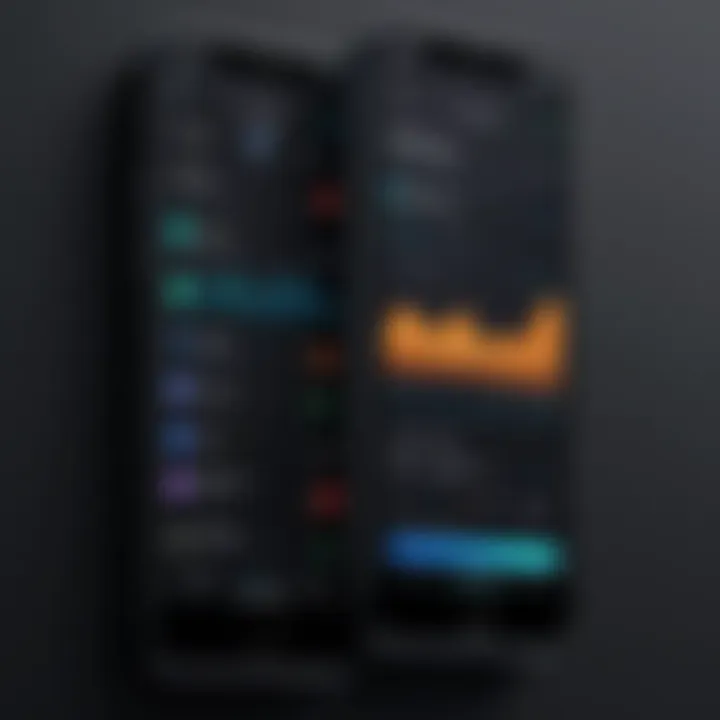
Each widget can provide quick access to specific app functionalities. For instance, users can choose a weather widget that displays current conditions or a calendar widget showing upcoming events. Customization options are designed to adapt to individual usage patterns, making it easier to stay organized and informed.
Changing Widget Sizes
Widgets come in different sizes, allowing for flexibility in design. Users can choose from small, medium, or large widget sizes depending on how much information they want to display. The process of changing sizes is simple: while in editing mode, one just needs to tap and hold the widget until the resize options appear. This flexibility is crucial in optimizing screen space and enhancing visibility for the information that matters most.
In addition, changing widget sizes can lead to more effective multitasking. For users who want quick access to multiple applications, larger widgets can display more data at a glance, reducing the need to switch between apps frequently.
Personalized Layouts and Design Choices
Personalizing layouts involves arranging widgets in a way that resonates with an individual’s style and workflow. Users might prefer a minimalist approach, keeping only essential widgets on their screens, while others may opt for a more vibrant layout with a mix of colors and designs. The interplay of widget sizes, shapes, and positions enhances not only the aesthetic appeal but also navigational efficiency.
When designing their layouts, users can consider factors such as:
- Functionality: Place frequently used widgets together.
- Aesthetics: Choose complementary colors and styles to create a cohesive look.
- Accessibility: Ensure that widgets are easily reachable, especially for larger screens.
"Personalization is not just a trend; it fundamentally shapes how users interact with technology."
In summation, customization and user preferences serve as vital elements in the overall widget experience on iPhone. By allowing users to curate their digital environments, Apple enhances functionality and personal engagement. As technology continues to advance, the ability for users to mold their experiences will prove more significant.
Practical Applications of Widgets
Widgets have fundamentally transformed how users interact with their iPhone devices. They serve practical functions that go beyond mere aesthetics, deeply integrating into daily tasks. Understanding their applications is essential for maximizing user efficiency and personalizing experiences.
Widgets simplify access to important information and tools. Instead of launching an app, users benefit from quick visibility into data that matters most to them. For instance, a productivity widget can display upcoming tasks at a glance, allowing for better time management. Similarly, health widgets offer real-time stats on fitness goals or reminders for water intake. This functionality aids in establishing habits that enhance users’ overall productivity and well-being.
The effective use of widgets can promote significant benefits. These include:
- Time Efficiency: Instant access to information reduces the time spent navigating through applications.
- Enhanced User Engagement: Regularly updated widgets maintain user interest and prompt interaction.
- Customization: Widgets can be tailored to suit individual preferences, enriching the user experience.
- Visual Appeal: A well-organized layout of widgets can make the home screen aesthetically pleasing, thereby providing functional and visual satisfaction.
User adaptability to widgets can also reflect the evolving landscape of digital tools. As more developers create sophisticated widgets for various applications, users are encouraged to explore new functionalities that enhance their iPhone experience.
"Widgets represent the next step in mobile interactivity, bridging the gap between information and accessibility."
User Experience Enhancements
In the digital landscape today, user experience stands as a fundamental aspect of application design and functionality. Widgets on iPhone significantly enhance user experience by providing instant access to important information directly from the home screen. This integration offers users practical benefits by reducing the need to navigate through multiple applications. The implications of widgets are vast, impacting usability, efficiency, and overall satisfaction with the device.
Improving Accessibility with Widgets
Widgets play a vital role in improving accessibility for users with diverse needs, empowering them with information at their fingertips. For individuals with disabilities, these tools can simplify navigation and facilitate ease of use. For example, larger widgets can feature larger text and clearer visuals, making content more legible. Apple's commitment to accessibility informs many of the design choices made in widget functionality.
- VoiceOver Compatibility: Widgets are developed with compatibility for VoiceOver, which enables visually impaired users to interact with the interface using voice and touch gestures. This feature allows users to hear widget content read aloud.
- Customizable Layouts: Users can customize their widget layouts to prioritize the information most relevant to them, ensuring that their unique needs are met efficiently.
- Unified Access Points: Accessibility-focused widgets can consolidate functions like reminders or calendar events into a single, easily navigable space, reducing complexity.
Widgets and Multitasking
Multitasking has become an essential functionality in modern mobile devices. Widgets aid in multitasking by allowing users to engage with multiple streams of information at once without constantly switching between apps. This capability not only enhances productivity but also simplifies the management of various tasks.
Widgets encourage efficient time management and information retrieval by providing real-time updates. For example:
- Calendar Widgets: By displaying upcoming events, users can quickly assess their schedules without opening the calendar app.
- Task Management Tools: Widgets that integrate with task management apps like Todoist or Trello allow users to view and manage their tasks in a glanceable format.
Furthermore, this multitasking approach aligns well with modern workflows, where users often partake in various activities concurrently. Instead of limiting users to one application at a time, widgets allow for seamless transitions between tasks and applications.
Ultimately, the integration of widgets into the iPhone experience represents a significant advancement in enhancing user engagement, accessibility, and multitasking capabilities. Users are increasingly able to tailor their devices to fit their lifestyles.
Challenges and Limitations
In assessing the integration of widgets on iPhone, it is critical to consider the challenges and limitations that accompany their usage. These aspects are not merely obstacles; they reveal vital insights into software design, user interactions, and the overall experience with iOS. By understanding the potential drawbacks, users can better navigate the opportunities presented by widgets. The importance of addressing these issues cannot be overstated, as they impact performance and accessibility across various device models. This section illustrates the balance between innovation and user satisfaction within the Apple ecosystem, emphasizing the dual nature of technology.
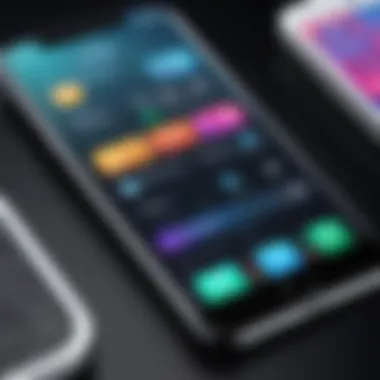
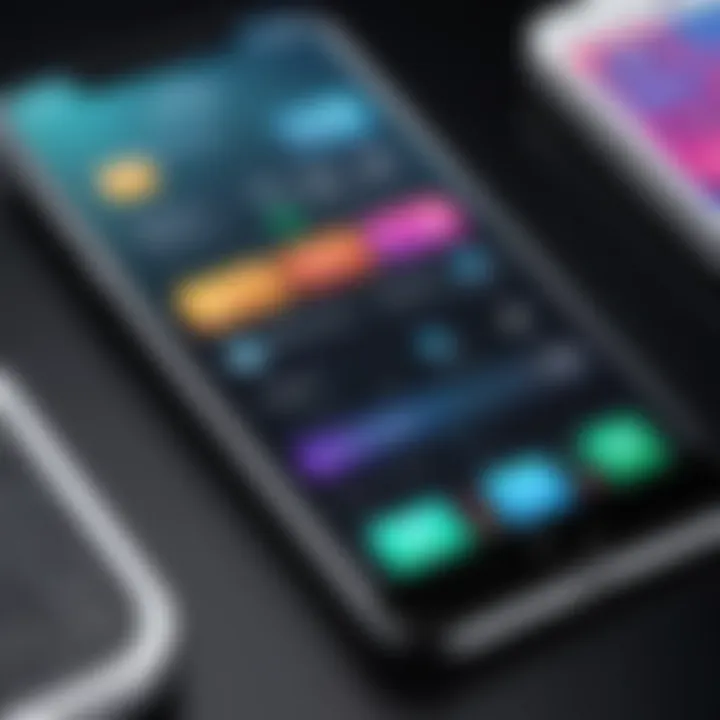
Performance Considerations
Performance remains a central concern for users and developers alike when it comes to implementing widgets on iPhone. Widgets can consume significant system resources, which may lead to performance slowdowns. This is particularly evident in cases of multiple widgets running simultaneously. While widgets contribute to a more dynamic interface, they also place a burden on the device's memory and processing power. Users may notice lag or increased battery consumption, thus leading to a less than optimal experience.
Moreover, it's worth mentioning that developers need to optimize their widgets. This includes efficient use of background processes, refresh rates, and data loading. If a widget continually pulls data or performs heavy calculations, it can lead to poor performance not just for that widget but for the entire system.
Some ways to mitigate performance issues include:
- Limiting the number of active widgets.
- Reducing the frequency of live updates.
- Testing on different devices to ensure compatibility and performance.
Compatibility Issues with Older Models
Compatibility issues with older iPhone models present another significant challenge. While Apple frequently updates its software, these updates often enhance features for newer hardware, leaving older devices at a disadvantage. Widgets, which may rely on newer APIs or capabilities, can function poorly or not at all on these aging systems.
Users with devices like the iPhone 7 or earlier may find themselves unable to fully leverage widget capabilities. Features designed for modern interfaces or technologies may be absent in the operating systems of older devices. Additionally, older devices may not possess the processing power necessary to support multiple active widgets without experiencing lag or battery drain. This can lead to frustration for users who do not upgrade their devices frequently.
As a result, developers face the challenge of ensuring that their widgets are accessible and functional across a range of devices. Testing and optimization for various iPhone models is essential when designing new widgets to satisfy the diverse user base within the Apple ecosystem. This encourages developers to consider not only current user capabilities but also the historical context of device performance when creating their products.
The Future of Widgets on iPhone
The landscape of mobile applications is evolving rapidly, and widgets are at the forefront of this transformation. Understanding the future of widgets on iPhone allows users to grasp how these tools can potentially enhance their daily digital interactions. As users continue to seek more intuitive and personalized experiences, the demand for advanced functionalities in widget technology grows.
The progression of widgets will likely focus on increasing their adaptability, integration with other apps, and improved user customization options. For instance, widgets may become more context-aware, adjusting to user preferences and routines. This could lead to more relevant information being presented at the right time, offering seamless interaction.
Furthermore, the potential for widgets to access and process data from other devices in the Apple ecosystem could create new avenues for interconnected experiences.
Potential Developments in Widget Technology
Looking ahead, several key developments in widget technology are expected.
- Enhanced Interactivity: Future widgets may allow for deeper interaction without needing to open the associated app. Users might be able to complete tasks directly from the widget view, reducing friction.
- AI Integration: The implementation of artificial intelligence could personalize widget content based on usage patterns. Widgets could intelligently display reminders, utilize predictive text for notes, or offer shortcuts based on user behavior.
- Dynamic Content: Widgets may evolve to provide real-time updates from various services. This includes integrating news feeds, social media updates, and even live data from IoT devices in the home.
- Additional Customization Options: Future iterations may allow for even more customization, ranging from aesthetic adjustments to functional enhancements that resonate with diverse user preferences.
Incorporating such features could revolutionize how users engage with their devices.
Impact of Emerging Technologies
Emerging technologies will also play a critical role in shaping the future of widgets. With advancements in areas such as machine learning, cloud computing, and augmented reality, the potential for newer widget functionalities is significant.
- Smart Home Integration: As smart homes become more prevalent, widgets could serve as control centers for smart devices, offering seamless management from the iPhone’s home screen.
- Cloud Services: With the rise of cloud technology, widgets might be able to pull information from various sources, efficiently aggregating data for user consumption.
- AR Capabilities: Augmented reality could redefine widgets, allowing users to visualize data in a three-dimensional format right on their device. Users may interact with this data in entirely new ways, creating a richer experience.
The future of widgets on iPhone is an exciting arena where technology will not only simplify tasks but also enhance daily life through intelligently curated information.
In summary, the future of widgets holds the promise of more personalized, interactive, and interconnected experiences. By embracing these developments, Apple can elevate user engagement, aligning with the needs and expectations of a tech-savvy audience.
The End and Implications for Users
Understanding the integration of widgets on the iPhone is essential for maximizing user experience and device efficiency. Widgets serve as a bridge between users and their most relevant content. Their tailored nature allows individuals to access information without the need to open multiple applications, making the iPhone more efficient. This aspect brings forth significant benefits.
Firstly, widgets enhance productivity, providing quick insights into calendar events, to-do lists, and news updates. This accessibility allows users to manage their time effectively without constant app-switching. Furthermore, by allowing customization, users can prioritize information most useful to them. These personalized layouts reflect individual preferences in technology usage.
Secondly, widgets improve device engagement. Users may find themselves spending more time interacting with the home screen rather than delving into various apps. This phenomenon highlights how user-friendly designs foster deeper connections with devices.
Moreover, as we consider the future of widgets, it's critical to acknowledge their potential evolution alongside emerging technologies. Artificial intelligence and machine learning integration can lead to smarter widgets that anticipate user needs.
In summary, the conclusion of this examination underscores the importance of widgets not just as cosmetic features but as practical tools. By embracing these digital helpers, users can significantly enhance their daily interactions with their devices.
Recap of Key Points
- Widgets simplify access to important information.
- They promote productivity through personalized solutions.
- Greater engagement can lead to more effective time management.
- Future developments could bring smarter functionality to widgets.
- Customizability remains a central theme in enhancing user experience.
Final Thoughts on Widget Usage
In reflecting on widget usage, several considerations arise. While widgets provide advantages, users need to assess how they align with their needs. Overloading the home screen with widgets might lead to distraction rather than productivity. Hence, moderation is key.
Additionally, staying informed about new developments can help users make the best out of widget functionalities. Apple constantly innovates, and keeping abreast of updates can unlock even greater potential in user experience.
Ultimately, using widgets effectively depends on individual user preferences and requirements. Those who take time to tailor their experience can realize substantial improvements in how they interact with their iPhones.







